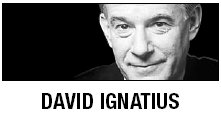WASHINGTON ― At the Pentagon, there’s a legal formula for intelligence operations that has come to be known as “Gates practice,” after its proponent, Defense Secretary Bob Gates. It basically argues that if the U.S. conducts a sensitive intelligence mission outside a war zone, the president should make the decision.

That may seem like a no-brainer, but it wasn’t always the case. Early in the last decade, when Gates’ predecessor Donald Rumsfeld was looking for ways to pursue al-Qaida, he issued a series of executive orders that gave the military new powers in the global war on terrorism. These “EXORDS,” as they were known, sometimes permitted commanders to approve sensitive operations without a White House and interagency review.
The Rumsfeld-era orders have been rewritten over the past several years, at Gates’ insistence. The review was begun by James Clapper, a former undersecretary of defense who’s now director of national intelligence. Michael Vickers, who is Clapper’s successor, is finishing the rewrite.
This review has brought all EXORDS in line with the Obama administration’s counterterrorism policies, which require more vetting of sensitive operations. The goal is to ensure that “Gates practice” is followed and the White House gets the last say. An earlier column outlined some of the excesses from 2001 to 2006, when Rumsfeld was secretary of defense.
A senior defense official who has been involved in the review sums up the change in standards this way: “What people might have thought sensible in the first half of the decade, by the second half they didn’t.”
Take the Pentagon’s use of Special Forces outside war zones, through a program known as “Military Liaison Elements.” Critics were worried these teams would become “alternate stations,” notes the defense official. Now, their activities must be fully coordinated with the State Department and the CIA.
To foster the core mission of liaison with foreign special operations forces, or SOF, members of these MLE teams are usually assigned on standard tours, rather than short-term temporary assignments. “The biggest benefit is engagement with foreign SOF,” explains the defense official.
The CIA uses the Special Forces, too, as in the May 2 raid on Osama bin Laden’s compound. The Navy SEALs who conducted the mission were “chopped to the CIA,” as the practice is sometimes called, so that they could operate under the agency’s Title 50 authority, which allows the U.S. to conduct “deniable” missions outside war zones.
Special Forces officers also work with the CIA on other sensitive missions, including task forces that collect signals intelligence inside the borders of foreign countries. These cases where military personnel are delegated to the CIA are sometimes known as “focal point operations.”
Members of Congress have worried that clandestine military intelligence activities aren’t subject to the same strict procedures as CIA “covert actions,” which require a presidential “finding” and congressional notification. The Pentagon instead briefs the armed services committees, sometimes leaving intelligence committee members in the dark. “People thought, ‘I’m getting half the story,’” notes the defense official.
This congressional concern surfaced at a March 22, 2007, hearing of the Senate intelligence committee on “DOD Clandestine HUMINT” (government-speak for “human intelligence”). According to an unclassified Pentagon summary, Sen. John D. Rockefeller, then committee chairman, “questioned the accuracy of ‘internal DOD definitions’ of clandestine and covert activity and asserted that DOD refuses to share EXORDS and other documents” with the Senate intelligence committee.
During the Rumsfeld years, “there was a general view that DOD was conducting activities that looked and smelled like intelligence activities, but were called something else,” says one congressional source.
“The situation has improved,” continues the congressional source. He notes that after the bin Laden raid, the intelligence and armed services committees were briefed jointly by CIA and Pentagon officials. And he endorses Gates’ effort to rewrite the EXORDS.
The CIA-military coordination process is often informal. When Gen. Mike Hayden was CIA director in 2008, he would sometimes call Gen. Martin Dempsey, then acting Centcom commander, to sort out which activities should be done by the military under Title 10 and which should be CIA Title 50 “covert” activities. (The main legal difference is that a military “clandestine” activity, while secret, can’t be denied if it’s exposed.)
Intelligence operations are murky, even with the clearest rules. The best safeguard is probably the “Gates practice” idea of having the president make decisions about operations that have, as the spy mavens like to say, “major flap potential.” The more sensitive the mission, the more it needs the boss’ approval.
By David Ignatius
David Ignatius’ email address is davidignatius@washpost.com. ― Ed.
(Washington Post Writers Group)








